Words: John Baron
Photos: Mark Stevenson
A grade II Listed weir on the River Aire at Newlay has been partly destroyed by the weekend’s flood water.
Environment Agency chiefs have started their investigations into the badly damaged weir, which dates back hundreds of years, but are being hampered by the river’s continued high water flows.
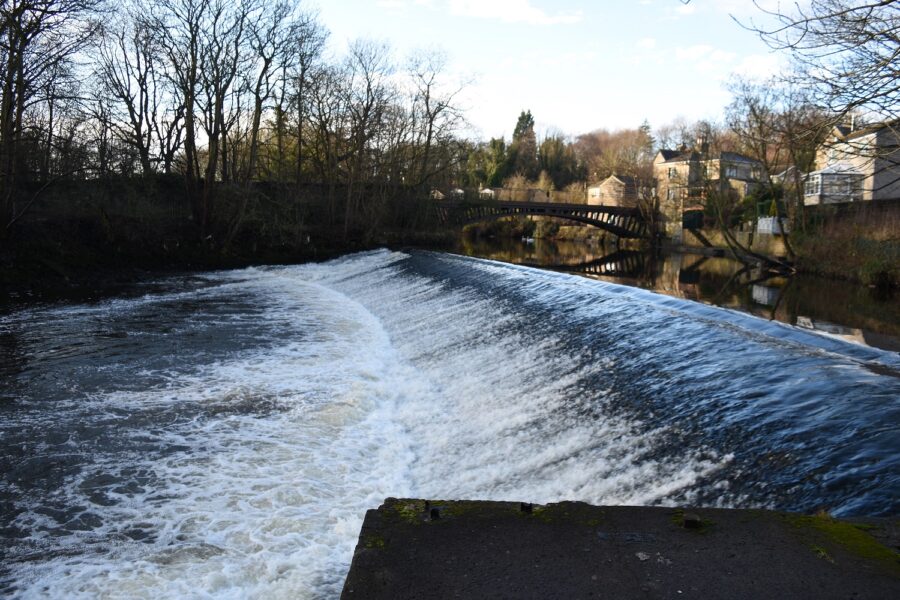
It’s understood the weir sustained damage to the mid section last week and much more of it was washed away on Sunday.
Work has been ongoing on creating a fish pass at the side of the weir, as part of a £2.7 million project taking place at four different parts of the Aire to allow salmon to swim up the river for the first time in 150 years. Some of the equipment to build the fish pass was also washed into the river.
An Environment Agency spokesperson told West Leeds Dispatch:
“We’re investigating the cause of a collapsed section of weir at Newlay, which happened as a result of high river levels caused by Storm Christoph. River flows on the Aire remain high, which makes it difficult to assess the damage to the fish pass construction site and the weir.
“We are on site inspecting the damage and working with our contractor and technical specialists to understand what the options are to stabilise the situation, and to understand the best long-term solution for this site. The assessments taking place will consider any changes in flood risk.
“We would encourage local residents to contact us should they notice any changes or anything that concerns them to our incident hotline on 0800 80 70 60.”
WLD Photographer Mark Stevenson captured these images of the damage today:
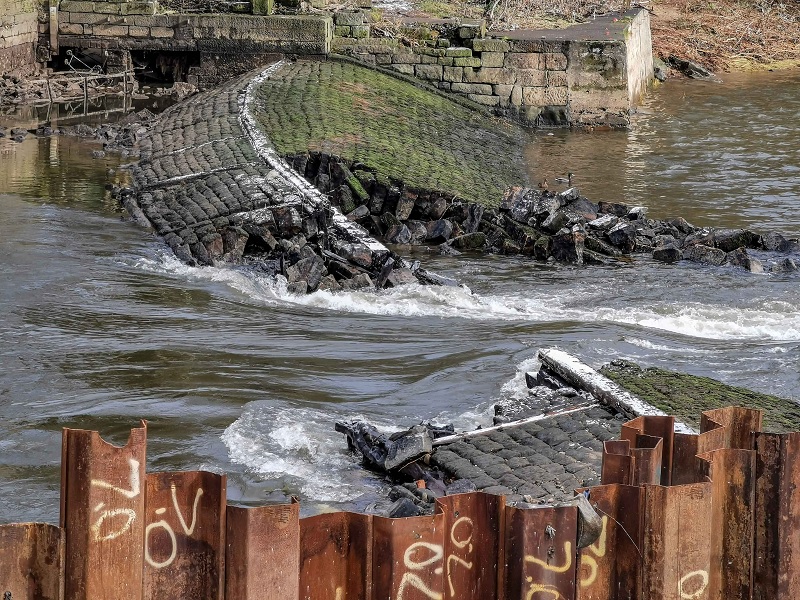
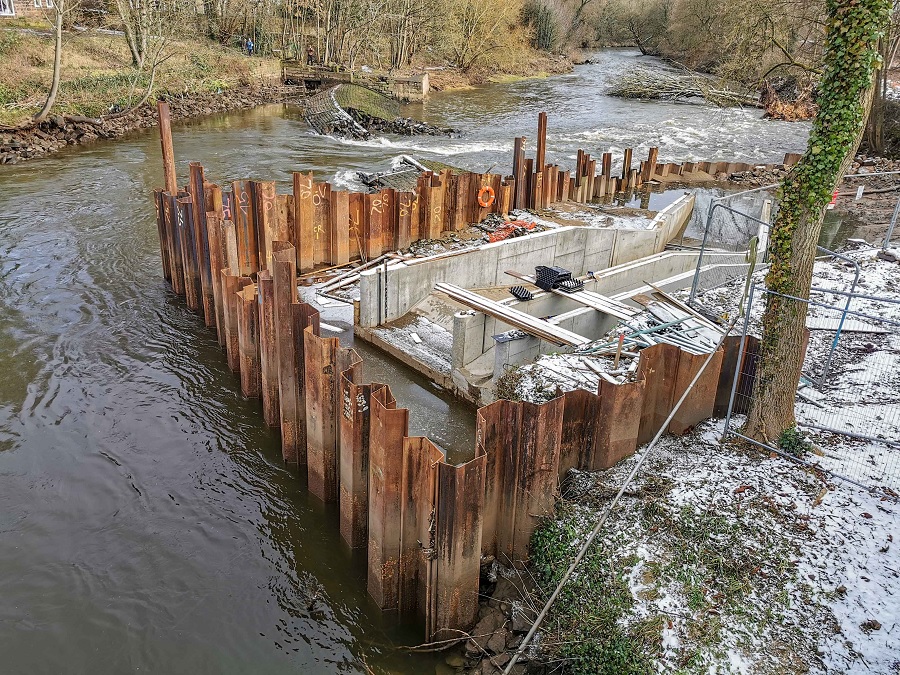
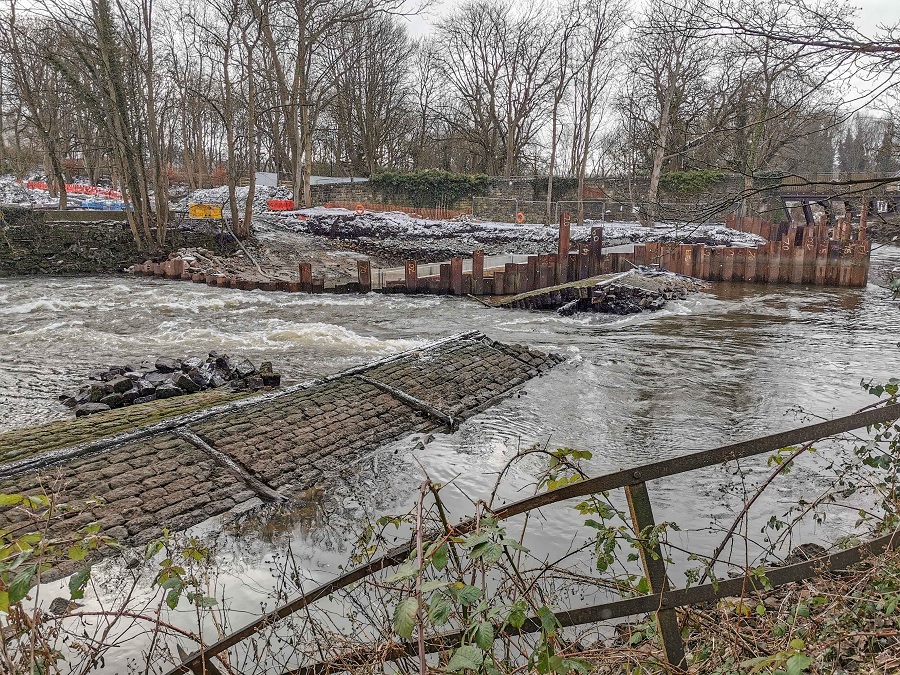
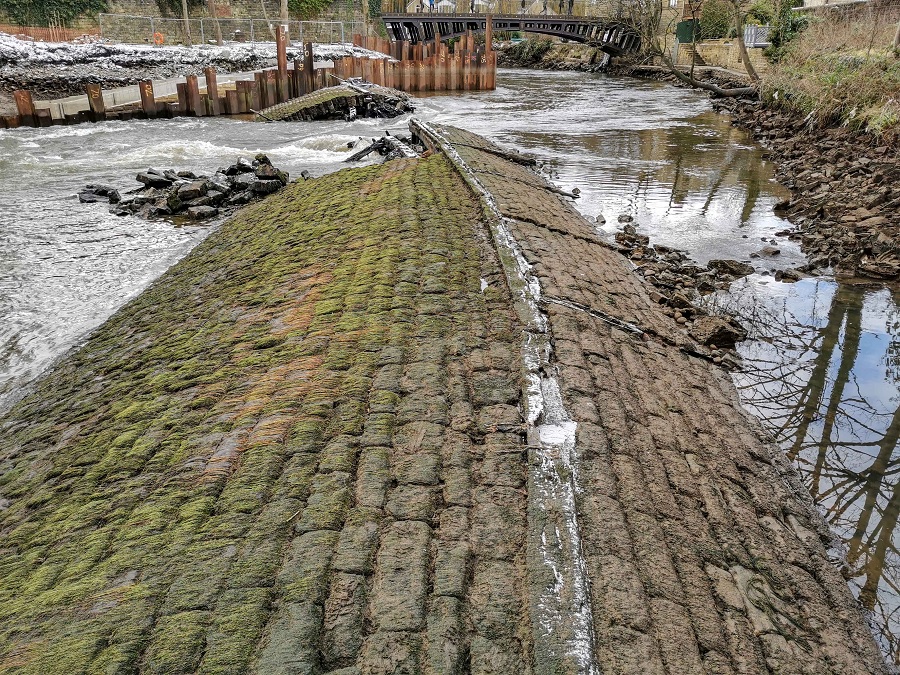
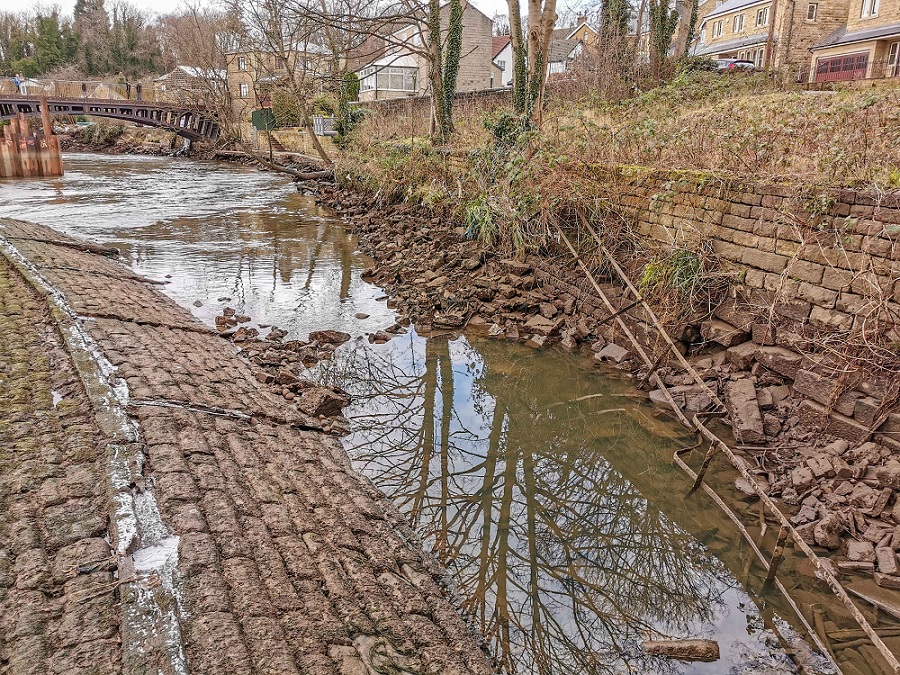
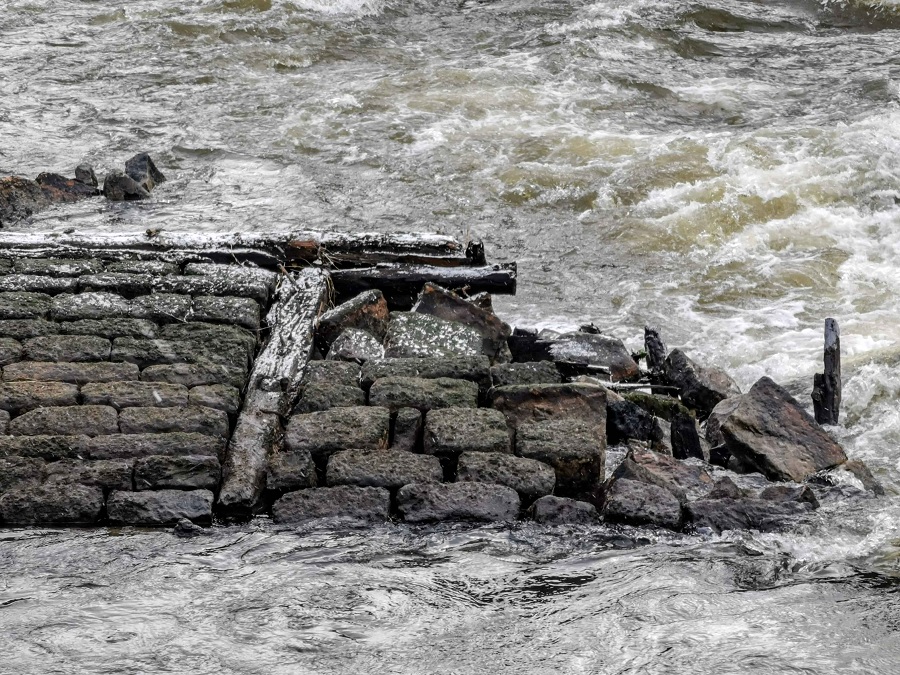
A post on the Newlay and Whitecote Residents Association Facebook page on Sunday said:
“After sustaining damage to the mid section recently, this morning (at some point after 9.30am) much more of it has been washed away. The water flow has also taken big chunks of soil and a few trees. In addition, some of the building equipment being used to construct the fish ladder has fallen into the water.”




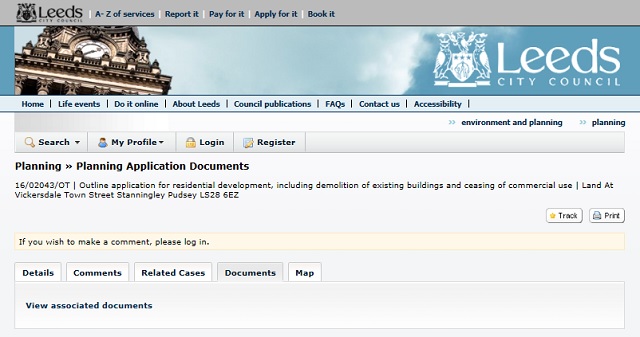
IT is obvious that with the construction of the fish pass more water was diverted along a narrower stretch of the river, resulting in this, when high river levels occurred.
Is the fish pass needed now, as the fish can travel up the river, where the broken wider was?
Perhaps I am being too suspicious but the weir couldn’t possibly have been destabilised during work constructing the fish pass, especially the placings of the pilings to keep water out of the works, could it? Seems very funny that it has withstood hundreds of years of floods, including the one a couple of years ago which was much worse, without damage but as soon as the contractors start work on the fish pass the weir collapses. Am I reading too much into the current work that is going on and the effects it may be having or could it be that the heavy machinery, especially driving the pilings into the river bed as caused vibration damage to the weir?
The comments from the River Authority are inaccurate. The weir first started showing signs of damage during the last week of December.
The damage has been getting progressively worse throughout January culminating in the complete destruction of the middle section over the last week.
Salmon will only go to breed where they were hatched. They don’t live for 150 years!
I used to think that but its not really true. Salmon will attempt to return to their own spawning ground but sometimes (like people) they miss their way and follow a different river estuary. If the passage is available they will pioneer a new ground because the instinct to spawn is so strong. Thats how other dead rivers like the Tyne , Don and Thames and many others now have salmon back in them.
I pass over Pollard bridge most days and observe the weir. During the Boxing Day 2015 floods the weir was complete overwhelmed by the flow to the point the water levels were equal up and down stream. Following this a small hole appeared in the face below the crest to the west end (where the fish pass is now). I was concerned when the sheet piling was driven across the weir as to the damage this would cause to weir as flow could now penetrate the inside of the weir. On completion of the coffer dam it was obvious the flow was deflected into a fast stream now flowing over the remaining mid section. It’s sad that this structure has survived all these years only to succumb to EA works. I’ve seen Salmon in Scotland climb much much higher waterfalls than this weir, was the pass necessary?
It seems obvious that the construction of the fish pass has led to this. The weir has survived worse floods than this before, yet has only collapsed after this construction has begun. The huge impact of the piling, in particular, will have caused damage, and the rerouting of the river flow has exacerbated the problem.
The weir has survived all these years, only to be destroyed shortly after the fish pass construction began. It doesn’t take a genius to put 2+2 together on this one.
Over the 25 years I’ve lived close by, there have been a number of occasions tree trunks have ended up stuck at the weir wall, after floods caused trees to fall into the river. This must have caused damage too, as they always lodge in the centre of the weir wall, plus their eventual removal must cause some damage too. The salmon pass workings have narrowed the river flow, so the water force is greater, coupled with the levels of flood water, these have undoubtedly all contributed to the current destruction of the weir.
I have lived round there for 40 years and seen worst floods it is down to the salmon pass it not rocket science
I am disappointed that leeds city council and the EA have tried to deflect the cause of the destruction on the newlay weir . I agree with other comments that damage from trees in the floods ext cause a degree of damage but this is directly caused because of the construction of the fish pass , which as someone else pointed out totally unnecessary if salmon did turn up they would have no problem navigating the weir this is going to cost a fortune to repair it looks like a war zone at the moment it’s most distressing to see
Might be a good time to just let nature reclaim this section of river totally. Shame that it did not happen before the fish pass was started.
S.A.F. I live by the weir & can’t tell you how distressing it is to see the damage. Don’t assume it doesn’t matter, it matters greatly. I & many others are sick & tired of the incessant pounding & noise emanating by this so called fish farm. I am convinced they are responsible for the downfall of our weir. Who is going to be held accountable?
Terrible planning and complete negligence from the Environment Agency. If you see the document on LCC Public access this was meant to be completed within 5 months and instead was ongoing for nearly 18 months; lockdown is an invalid excuse considering construction work was considered essential and allowed to continue. I would personally be very embarrassed to work for the Environment Agency as they claim a storm caused the damage which is a blatant lie considering it stood there for 400+ years and survived the 2016 boxing day floods comfortably. They have caused a massive eye sore in the area, not only through destroying the weir but through leaving a big concrete exposed fish pass which is totally redundant now the water levels are so low; further to this it has massively disturbed the local heron population as they would frequently fish here (grey herons, little egrets and great white egrets) which no longer use the area.